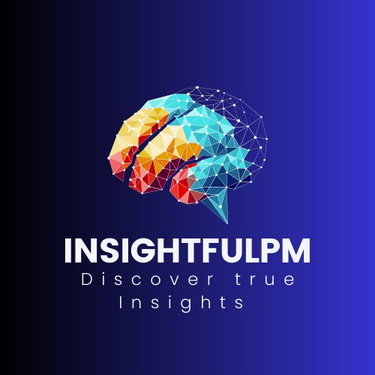Beyond Task Automation: Unlocking AI's True Potential in Portfolio Management
The project management landscape is experiencing a quiet revolution. These are undeniably positive steps – but they represent only the tip of the iceberg when it comes to AI's transformative potential in portfolio management.
Praful Pujar
6/9/20254 min read


The project management landscape is experiencing a quiet revolution. Walk into any software development organization today, and you'll find project managers leveraging AI tools to streamline task creation, consolidate project data, and automate routine workflows. These are undeniably positive steps – but they represent only the tip of the iceberg when it comes to AI's transformative potential in portfolio management.
The Current State: Good First Steps, But Just the Beginning
Most organizations have embraced what I call "tactical AI adoption" in project management. They're using agentic AI tools to simplify daily tasks, create more cohesive project platforms, and free up project managers from routine administrative work. This shift allows PMs to focus on strategic thinking and team leadership – valuable outcomes that shouldn't be underestimated.
However, this approach treats AI as a sophisticated productivity tool rather than a strategic intelligence platform. While task automation and data unification are necessary foundations, they fail to unlock the deeper insights that separate high-performing organizations from the rest.
The Untapped Opportunity: From Data Collection to Strategic Intelligence
The real breakthrough comes when organizations move beyond using AI for task management to leveraging AI for portfolio intelligence. This means transforming the data generated through AI-assisted project management into actionable insights about organizational performance, project trajectory, and strategic alignment.
Consider this scenario: Your AI tools are creating tasks, tracking progress, and consolidating information across multiple projects. But are they helping you understand why Project A consistently delivers ahead of schedule while Project B struggles with scope creep? Are they identifying patterns that predict which projects will face resource constraints three months from now? Are they revealing whether your current portfolio trajectory aligns with your strategic objectives?
The Strategic AI Framework: Three Levels of Intelligence
Level 1: Operational Efficiency This is where most organizations currently operate – using AI for task creation, workflow automation, and data consolidation. It's valuable but limited in scope.
Level 2: Predictive Analytics Here, AI analyzes historical project data to predict future outcomes, identify potential risks, and recommend resource allocation adjustments. This level transforms reactive project management into proactive portfolio optimization.
Level 3: Strategic Portfolio Intelligence At this level, AI provides continuous assessment of portfolio performance against strategic objectives, identifies cross-project patterns and anomalies, and offers recommendations for portfolio-level decisions that drive organizational success.
Building Your AI-Driven Portfolio Intelligence System
The transition from tactical AI use to strategic portfolio intelligence requires a systematic approach:
Establish Data Interconnectivity Move beyond isolated project data to create interconnected datasets that reveal relationships between projects, resources, market conditions, and business outcomes.
Implement Continuous Monitoring Deploy AI systems that constantly evaluate project progress against both individual project goals and broader organizational objectives, providing real-time insights into portfolio health.
Develop Pattern Recognition Capabilities Use AI to identify trends that span across projects – common risk factors, successful methodologies, resource optimization opportunities, and strategic alignment indicators.
Create Feedback Loops Establish systems where AI insights inform future project planning, resource allocation, and strategic decision-making, creating a continuous improvement cycle.
The Competitive Advantage of Strategic AI Adoption
Organizations that successfully implement AI-driven portfolio intelligence gain several critical advantages:
Enhanced Decision-Making Speed: Real-time insights enable faster, more informed decisions about project prioritization, resource allocation, and strategic pivots.
Improved Resource Optimization: AI identifies optimal resource distribution across projects, reducing waste and maximizing output.
Proactive Risk Management: Predictive analytics help organizations address potential issues before they impact project delivery or business outcomes.
Strategic Alignment Assurance: Continuous monitoring ensures that project portfolios remain aligned with evolving business objectives and market conditions.
Implementation Considerations for Software Leaders
For CxOs in software product and service organizations, the transition to strategic AI adoption requires careful consideration of several factors:
Technology Infrastructure: Ensure your systems can support advanced AI analytics while maintaining data security and compliance requirements.
Organizational Change Management: Prepare your teams for the shift from tactical AI use to strategic intelligence platforms, including necessary training and role evolution.
Measurement Frameworks: Develop metrics that capture not just operational efficiency gains but strategic value creation from AI-driven insights.
Iterative Implementation: Approach the transition systematically, building on existing AI foundations while gradually introducing more sophisticated analytics capabilities.
The Path Forward
The organizations that will lead in the next decade aren't just those using AI to automate tasks – they're the ones using AI to generate strategic intelligence that drives better business outcomes. The difference between tactical AI adoption and strategic AI implementation is the difference between incremental improvement and transformational competitive advantage.
As project management continues to evolve, the question isn't whether to adopt AI – it's whether to settle for operational efficiency or pursue the strategic intelligence that will define market leaders. The foundation has been laid with current AI tools. Now it's time to build the intelligence platform that will drive your organization's future success.
The true win for AI in portfolio management isn't just about working more efficiently – it's about working more intelligently, with insights that transform how organizations plan, execute, and succeed in an increasingly complex business environment.
At InsightfulPM, we’ve moved beyond automation to build true AI-powered intelligence platforms.
Our suite of products—including InsightfulPM-AI, UtilizationInsights-AI, and InsightfulVM-AI—are already delivering predictive insights and portfolio-level analytics to forward-thinking leaders. With our latest portfolio management solution, we’re continuing that journey by integrating GenAI into organizational data streams—empowering CxOs with real-time visibility, early risk indicators, and strategic alignment metrics across sales, managed services, AMC, and project delivery. This isn’t just project tracking—it’s a transformation of how decisions are made, ensuring every portfolio action is both data-driven and strategically aligned.
